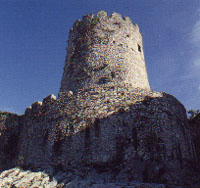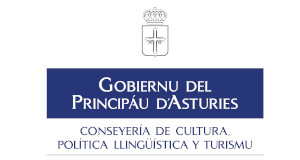The Middle Ages
15 Avientu, 2008 por Asturies.com





With the move of the Royal Court to León in a.d.914,
Asturies was no longer the capital it had been, and once again fell into a
profound isolation from the decision-centres, first in the court of León
and later in Castilla. This loss of influence was to provoke various secessionist
movements, the most notable of which was the rebellion of Count Gonzalo Pelaéz
against King Alfonso VII in the twelfth century, with the consequent Regina
in Asturias. Urraca, the king's illegitimate Asturian daughter, was to be
the protaganist of a later attempt at independence.
In these siglos oscuros or rather the dark ages from the tenth to the thirteenth centuries, Asturies was obliged by its land-locked isolation to turn its face to the sea, a move in which the inclusion of San Salvador de Uviéu as one of the most important landmarks along the pilgrims' route to Santiago de Compostela was to figure largely, especially after the opening in 1075 of the Holy Arc and the circulation of stories of the miraculous consequences of contemplating the Holy Relics. As a consequence of this pilgrims from all along the European Atlantic coast began to arrive at the ports of Avilés, LIanes, Villaviciosa and Ribesella, to embark thence upon the route, and all these ports but especially the first, Avilés, were to enjoy a healthy commerce with Bayona, La Rochelle, Nantes, the bay of Bourgneuf, all of which explains the presence of a duty-free area and documentary evidence of tradespersons such as one Martinus Breton (in the year 1223), and the fact that one of the town's patron saints is St. Thomas (Santo Tomás) of Canterbury.
The dispersion of the rural population at a time when outside contact came by sea and not from the interior made political control of the territory on the part of the supreme power of the king most difficult, and determined royal politics insofaras the creation of village-towns, each one with a large area of influence. It was to be the beginning of the first movement towards urban expansion in the territory, a process which would be continued in the fourteenth and fifteenth centuries with the consolidation of municipalities, or conceyos, which were to organise themselves into a Xunta, or assembly for popular representation.
In 1388, with the marriage of Enrique, eldest son of Juan I of Castilla, to Catalina of Lancaster, the King gave to his heir the title of Prince of Asturies, creating thus an institution which survives today and which was created after the likeness of that of the Prince of Wales, already created one hundred
In these siglos oscuros or rather the dark ages from the tenth to the thirteenth centuries, Asturies was obliged by its land-locked isolation to turn its face to the sea, a move in which the inclusion of San Salvador de Uviéu as one of the most important landmarks along the pilgrims' route to Santiago de Compostela was to figure largely, especially after the opening in 1075 of the Holy Arc and the circulation of stories of the miraculous consequences of contemplating the Holy Relics. As a consequence of this pilgrims from all along the European Atlantic coast began to arrive at the ports of Avilés, LIanes, Villaviciosa and Ribesella, to embark thence upon the route, and all these ports but especially the first, Avilés, were to enjoy a healthy commerce with Bayona, La Rochelle, Nantes, the bay of Bourgneuf, all of which explains the presence of a duty-free area and documentary evidence of tradespersons such as one Martinus Breton (in the year 1223), and the fact that one of the town's patron saints is St. Thomas (Santo Tomás) of Canterbury.
The dispersion of the rural population at a time when outside contact came by sea and not from the interior made political control of the territory on the part of the supreme power of the king most difficult, and determined royal politics insofaras the creation of village-towns, each one with a large area of influence. It was to be the beginning of the first movement towards urban expansion in the territory, a process which would be continued in the fourteenth and fifteenth centuries with the consolidation of municipalities, or conceyos, which were to organise themselves into a Xunta, or assembly for popular representation.
In 1388, with the marriage of Enrique, eldest son of Juan I of Castilla, to Catalina of Lancaster, the King gave to his heir the title of Prince of Asturies, creating thus an institution which survives today and which was created after the likeness of that of the Prince of Wales, already created one hundred









